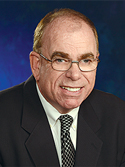
Conventional wisdom can be a reassuring thing. Especially when it reinforces our suspicions.
But it has a fatal flaw: Sometimes it can be flat-out wrong. Consider 94-year-old Olga Kotelko. Conventional wisdom holds that she should probably be concerned about whether she’ll break her hip. In reality, the coming months are more likely to see her shatter track and field standards.
You see, Olga holds more than 20 world records in the 90-94 age group. But she isn’t just some freak-show outlier. In fact, we can all learn a lot from her experience and examples.
When this retired teacher started playing slow-pitch softball in her 60’s, she never thought she’d be launching a world-class athletic career in another decade or so. But after getting some encouragement to compete in the British Columbia Seniors Games at age 77, she soon found a new passion: track and field. She began with the 100 meters and 200 meters, shot put and discus and then added the javelin.
She’ll turn 95 on March 2. But Olga’s not one for looking back. She’d rather plan for the road ahead. Already, her 2014 schedule includes at least one track meet each month.
Writer Bruce Grierson spent more than a year cobbling together a lengthy profile on Kotelko for the New York Times that ran in 2010. Afterward, he felt there was more still to be explored. The result was his new book “What makes Olga run?” (Random House).
In it, he examines how Kotelko and several other seniors continue to compete and thrive at a stage in their lives when many of their peers are slowing down. Besides the expected off-the-charts data, Grierson weighs in on other aspects of Kotelko’s life that can help explain her physical prowess.
Raised on a Canadian farm during the Depression, Kotelko was the seventh of 11 kids. She would later leave an abusive marriage to an alcoholic husband, opting to forge her own path as a single mother in the 1950s. Her eldest daughter, Nadine, was diagnosed with non-Hodgkin’s lymphoma at age 53, and died in 1999.
“That resilience was forged by having to overcome some tough stuff, that, to me, was a significant part of the story and still, I think, is a part of who Olga is — a big part of it,” Grierson said in a recent interview.
But there’s little doubting that her commitment to physical fitness also plays a pivotal role.
“Olga grew up on a farm where she just did stuff all day long. You didn’t work out and just sit — you just moved. And she kept that habit going throughout her whole life. We’re now learning from the research that that’s the way you’ve got to do it.”
When she was asked about the key to being able to remain active for so long, she credited a positive attitude. She’s also a Sudoku enthusiast.
So let’s see: She avoids unhealthy food, exercises, gets regular rest, stays on task, has a positive attitude and enjoys being mentally challenged.
A cynic might say she’s nothing more than the beneficiary of great DNA. Certainly, genetics helped her get past hurdles that might have stopped others. But genetics is hardly the whole story.
The real lesson of Olga’s life is not just that she inherited unusual blessings. It’s that she has been unusually resourceful in making the best of what she had to work with.
John O’Connor is McKnight’s Editorial Director.




